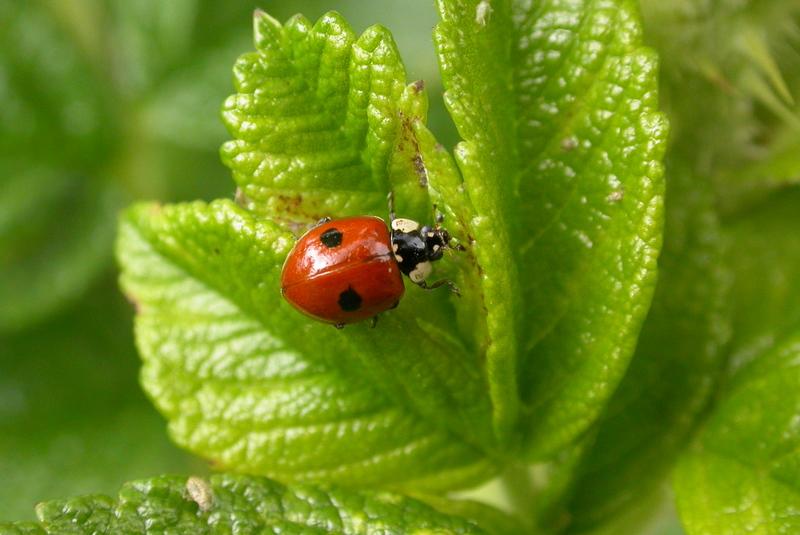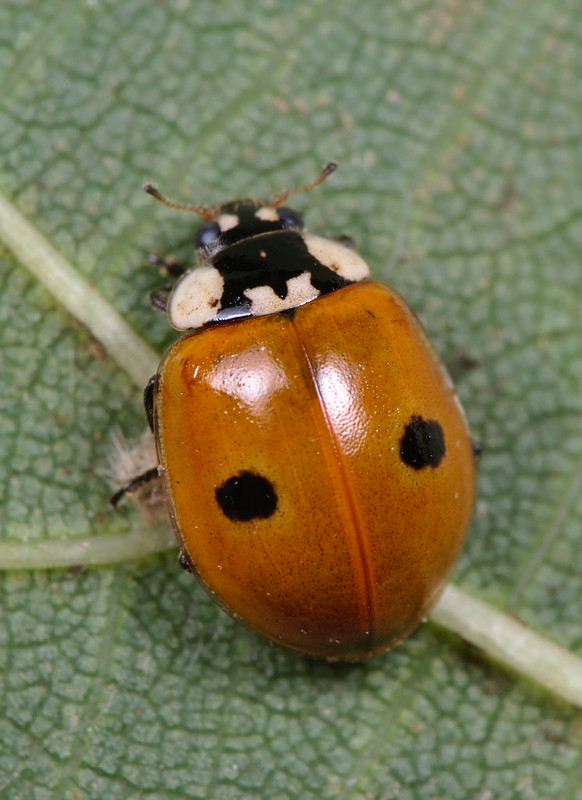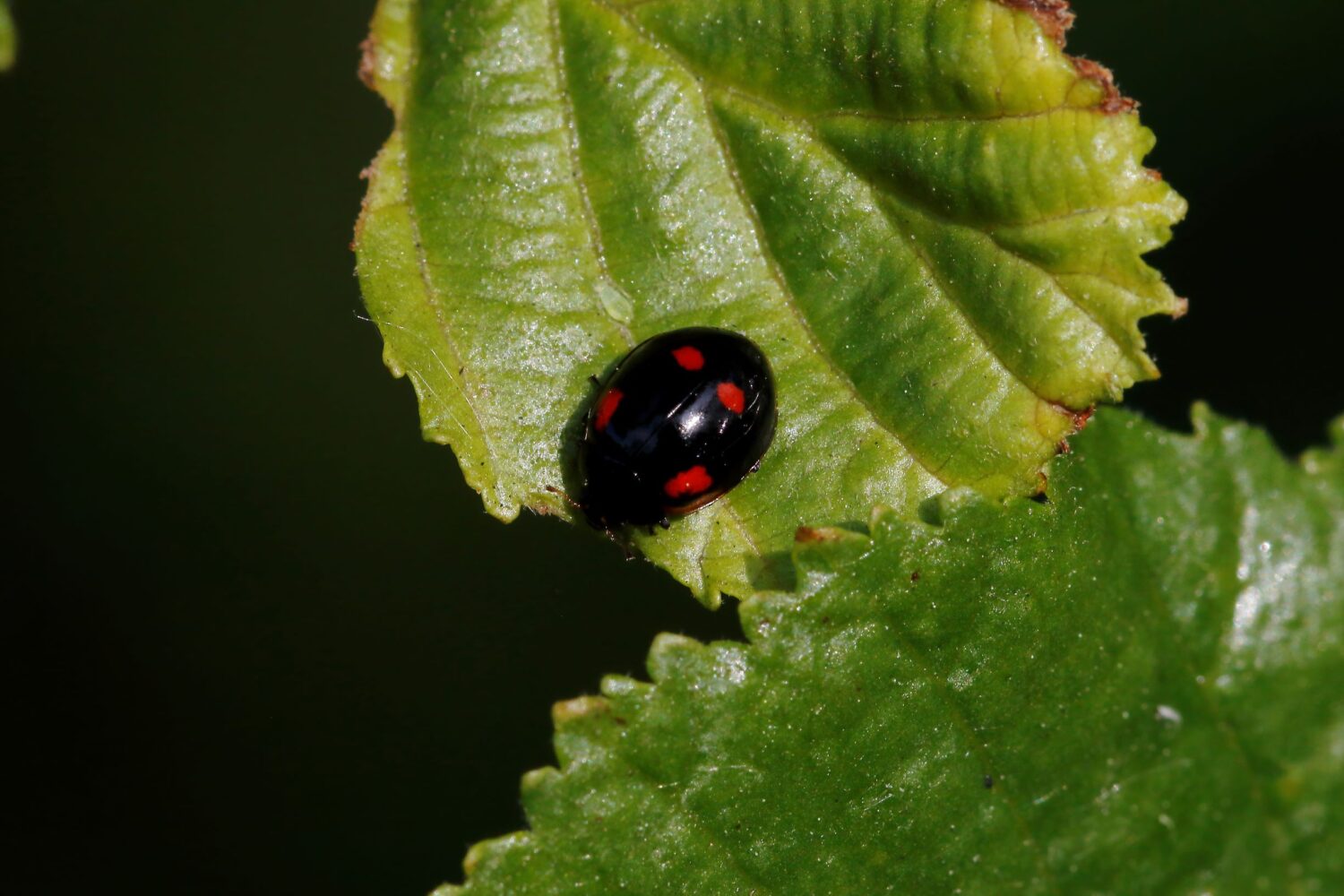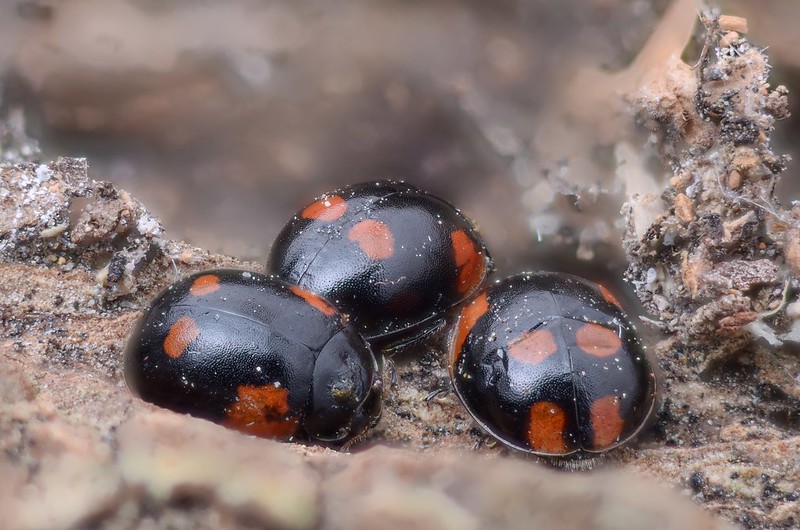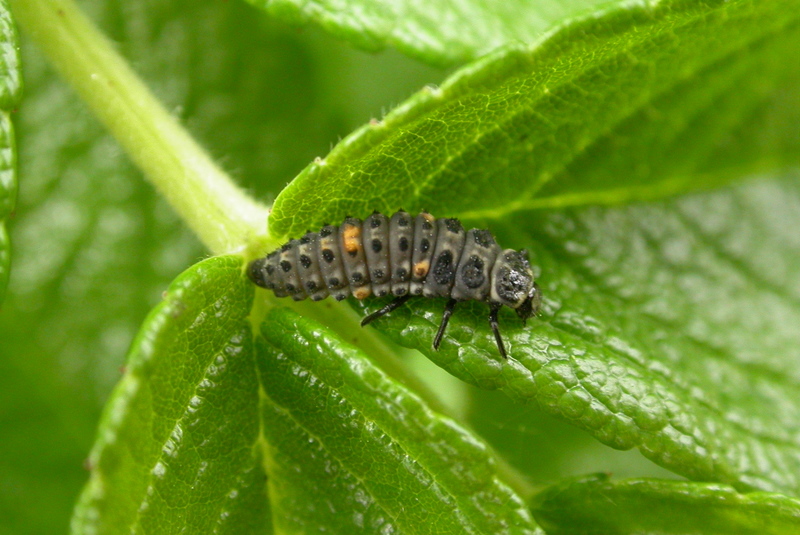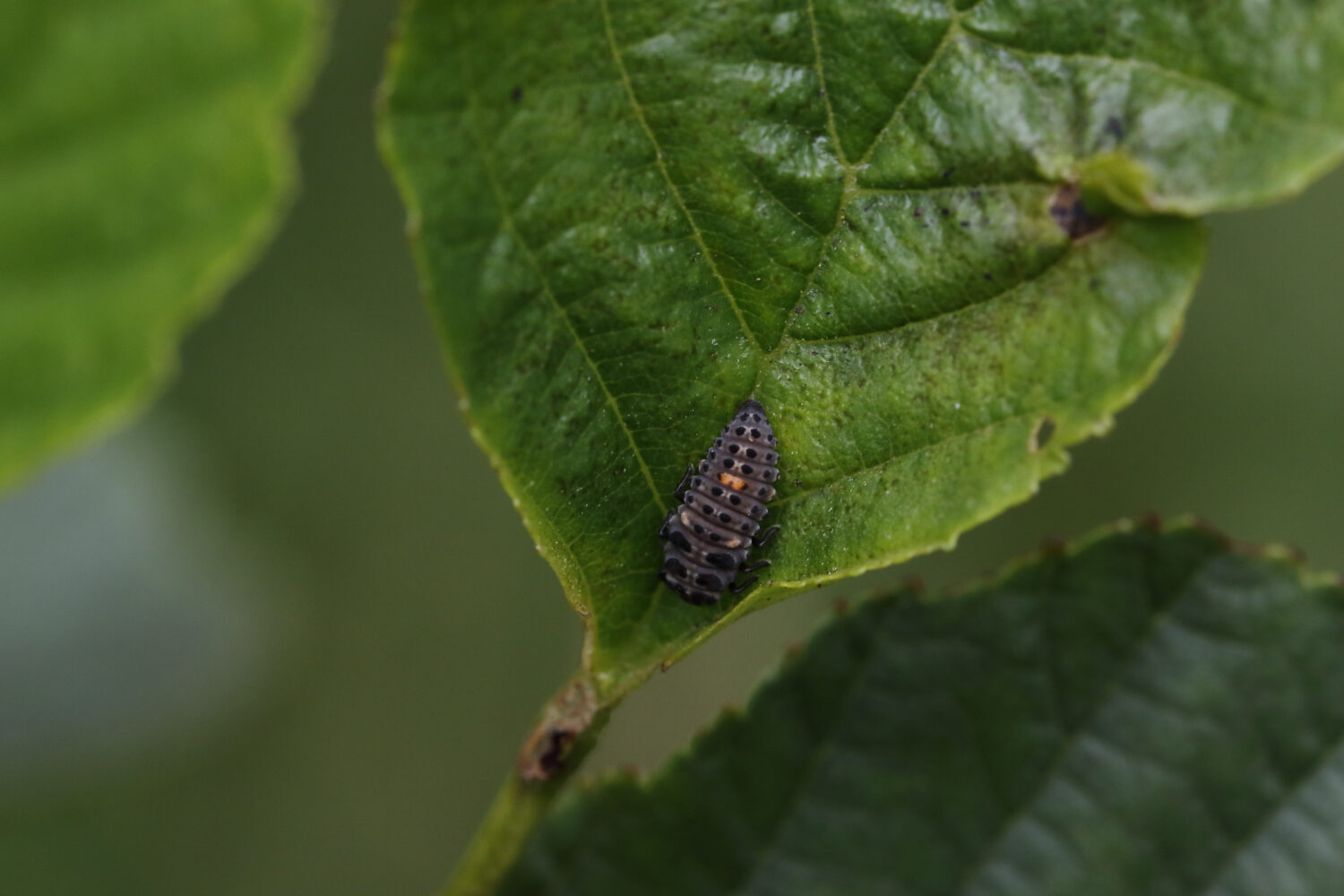The 2-spot Ladybird is typically red with two black spots. This species can be found in a wide range of habitats.
Fast facts
- Common name(s)
- 2-spot Ladybird
- Scientific name
- Adalia bipunctata
- When to see it
- Year round
- Diet
- Aphids
Description
The 2-spot Ladybird is typically red with two black spots. This species can be found in a wide range of habitats.
Identification
Adults
Adults typically have red elytra (wing cases) with two black spots. Adults are 4 – 5 mm in length and have black legs. Adults are variable and it is useful to be aware of the three other common forms.
| Form | Elytra colour | Spot pattern |
| ‘Typical form’ f. typica | Red | Two black spots |
| f. annulata | Red | Two – six elongate black spots |
| ‘Four-spot melanic’ f. quadrimaculata | Black | Four red spots |
| ‘Six-spot melanic’ f. sexpustulata | Black | Six red spots |
Larvae
Late stage larvae are dark grey and have orange spots on the first and fourth abdominal segments arranged as a triangle . 10-spot ladybird larvae are similar but are light grey and have yellow spots.
Pupae
Pupae have a black front section then cream, with six rows of dark spots running down the back. 2-spot Ladybird pupae are similar to 10-spot Ladybird pupae. However, 10-spot Ladybird pupae are paler with orange spots.
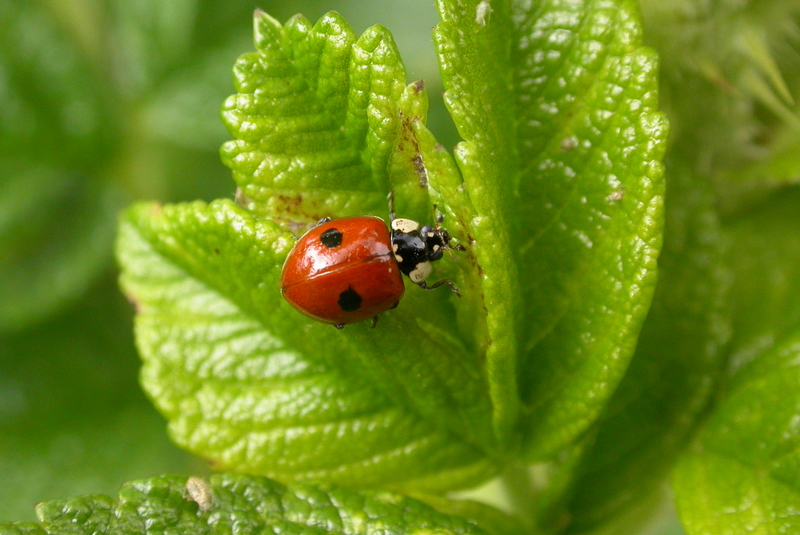
Spotted this ladybird?
Share your sighting of this and other North East Ladybird Spot spotlight species to contribute to the conservation and study of our region’s ladybirds.
Similar species
The typical form of this species is distinctive. However, the black forms of the 2-spot Ladybird look similar to other ladybird species.
- The 10-spot Ladybird has black forms but has brown legs rather than black.
- The Pine Ladybird is black with red spots but has a distinctive rim to its elytra and two comma-shaped red spots.
- The Harlequin Ladybird is larger (5 – 8 mm) than the 2-spot Ladybird (4 – 5 mm)
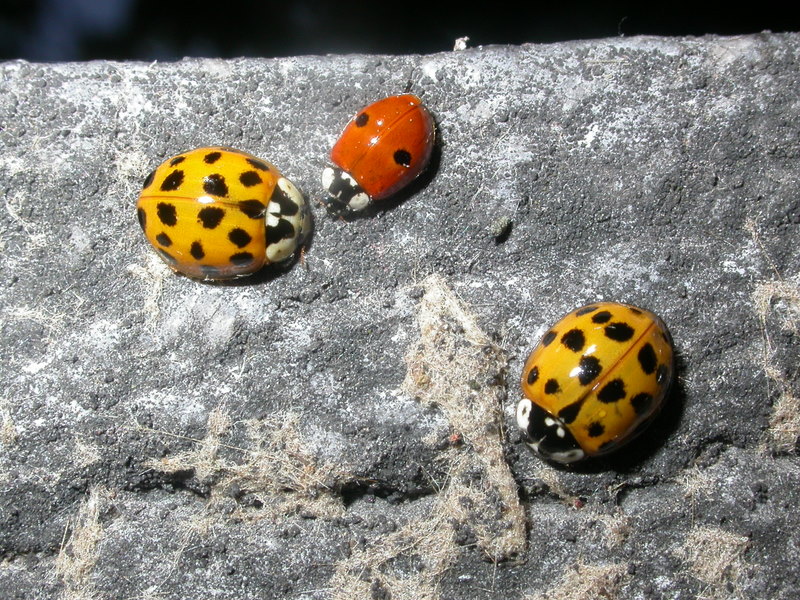
Size difference between 2-spot Ladybird and Harlequin Ladybird © Gilles San Martin
Ecology
Adults can be found throughout the year and the 2-Spot Ladybird has one or, sometimes, two generations a year in the UK. The females can lay up to 1,500 eggs and, as each larva may consume 250 aphids in its lifetime, they are useful biological controls. The adults overwinter in a range of habitats and may be found in houses and outbuildings.
The 2-spot Ladybird is a generalist species found in a wide range of habitats. It is frequently found on deciduous trees, such as Lime or Sycamore, but can be found on a variety of plants.
Did you know?
The 2-spot Ladybird has been deliberately introduced to Australia as a biological control. In the UK there are companies that sell 2-spot Ladybird larvae for pest control.
Regional Distribution
More common in the south of the region, the records of the 2-spot Ladybird are most frequent in urban areas and along the coast. This species is widely distributed across Britain and Ireland, but absent from Northern Scotland.
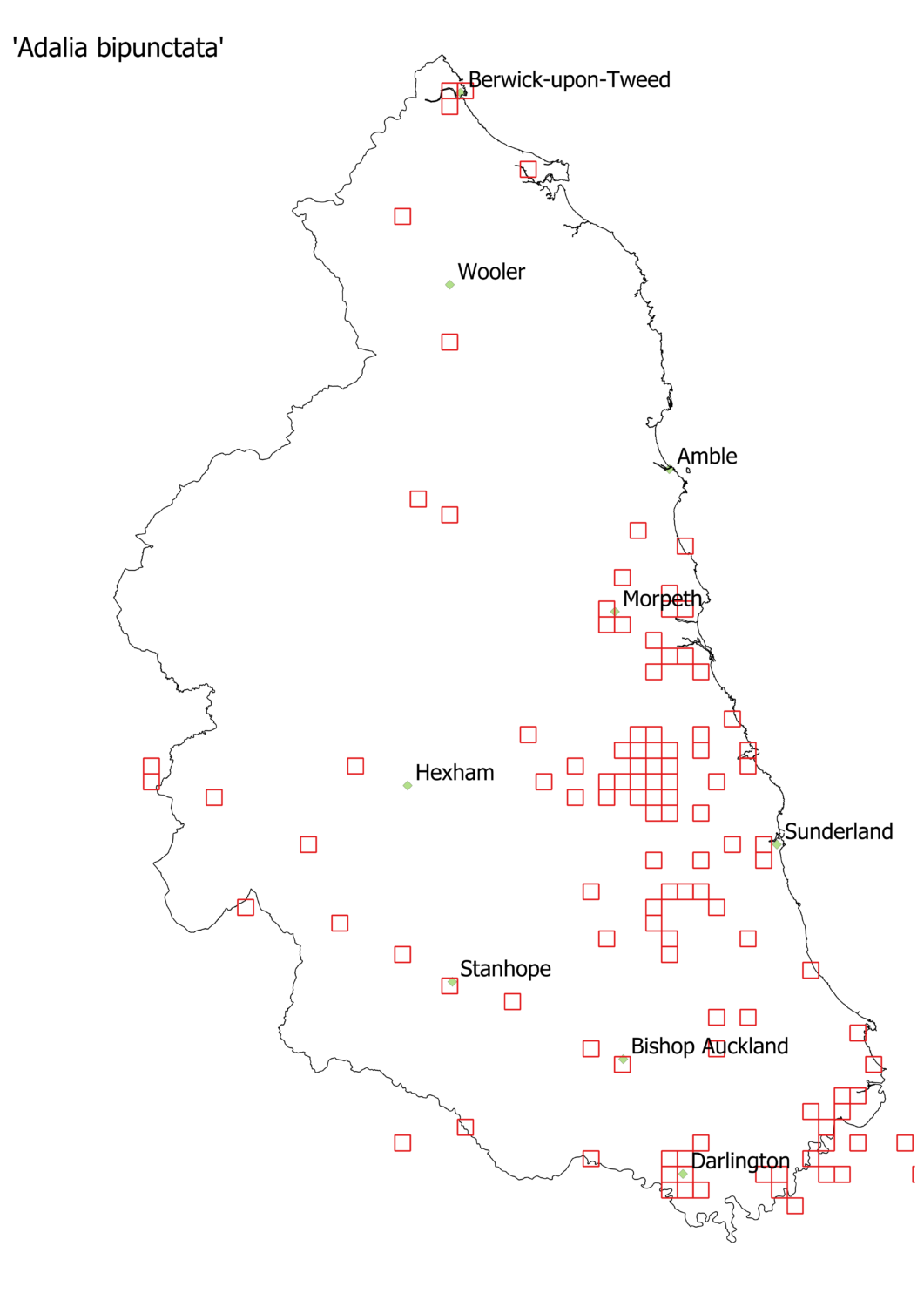
Distribution map of 2-spot Ladybird (ERIC North East data)
